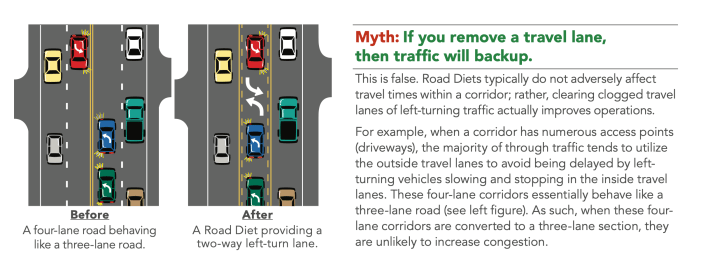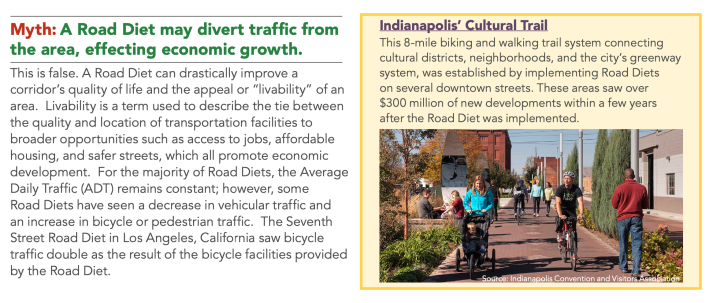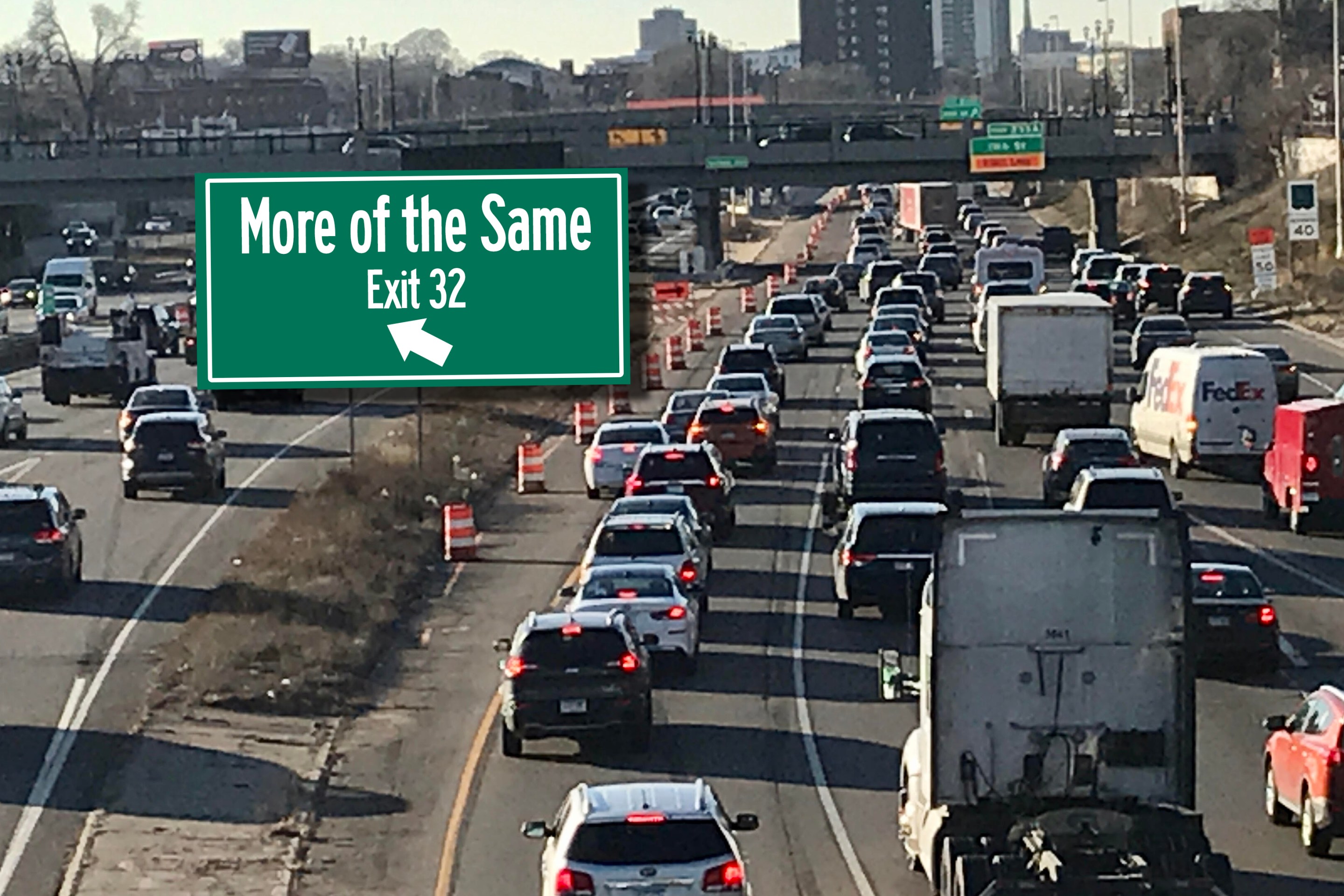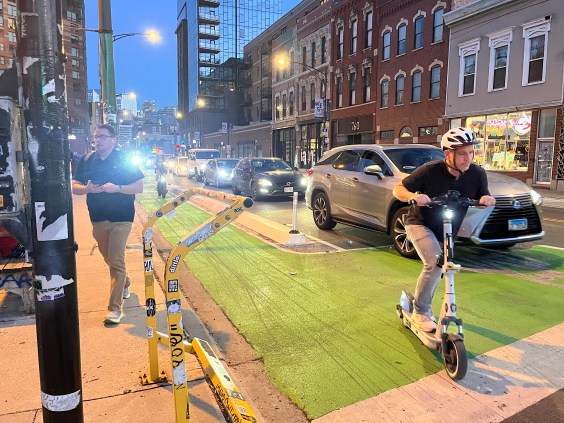The U.S. Department of Transportation will look "less favorably" on safety projects that reduce lane capacity for vehicles, according to the agency's newly issued grant criteria — raising alarm among advocates for safe street design, especially in dense urban environments with little space to spare.
The Trump administration last week issued its first notice of funding opportunity for the Safe Streets and Roads for All program, giving communities an unusually tight window of just three months to submit applications for roughly $1 billion in funding.
That money, historically, has gone to a mix of planning grants and hard infrastructure projects aimed at saving lives, like bike lanes, sidewalk expansions, and road diets. But the Trump administration appeared to radically upend that precedent, noting on page 54 of the grant criteria that if "the applicant included infrastructure [resulting in] reducing lane capacity for vehicles," said application "would be viewed less favorably by the Department."
Some advocates fear that means the U.S. DOT is essentially dropping all road diets from its signature safety program — and forfeiting one of its most important tools to slow down drivers and save lives in and out of automobiles.
"Excess road capacity leads to excess speed," Chris Forinash of the design firm Nelson\Nygaard, told Streetsblog. "Many of our urban and suburban arterials haven’t seen investment in decades and need to be modernized. That has to include how we allocate our public right of way for maximum public benefit."
Others say the new criteria, by contrast, will only benefit those who believe motorists need more space — whether or not that's actually true.
"This approach makes clear that, for this administration, safety might have to take a backseat to maintaining space for cars, even on underutilized roads and streets," said Beth Osborne of Transportation for America.
Recognized by U.S. DOT itself as a proven way to save lives, a road diet — or, as some people argue they should be called, road "rebalancing" — involves reconfiguring the design of a corridor to make more room for bike lanes, sidewalks, bus lanes, train lines, or other infrastructure for people outside cars, and encourage the motorists who remain to slow down.
Moreover, because road diets encourage people to leave their cars at home — and often, streamline turning movements for drivers that frequently cause back-ups — studies show they can actually decrease congestion along the redesigned corridors, often without adding extra traffic to adjacent side streets.
Studies show that converting a four-lane road to three lanes can cut crashes as much as 47 percent.
Even simply narrowing existing lanes from a highway-style width of 12 feet to a neighborhood-appropriate nine feet, though, can still cut crashes significantly. And both of these approaches can create a ample room for other modes, as well as linear parks, outdoor dining and retail, or in the case of road diets that reclaim a lot of lanes like highways-to-boulevards conversions, even housing and businesses.


Secretary Sean Duffy's DOT, though, appears not to recognize the many proven benefits of road diets — and in some cases, it's actively erasing them from public memory.
In a Federal Highway Administration explainer that disappeared from government websites in late February (but is still viewable on archiving websites), U.S. DOT officials busted four common myths about road diets, including the false belief that they cause traffic jams, hurt nearby business revenues, delay emergency response times, and impair the movement of freight trucks and other large vehicles.
"Road diets are an innovative roadway reconfiguration that improves safety, increases livability, and can advance an area's economic growth," the FHWA wrote in 2016. "Even after hundreds of successfully implemented road diets across the country, [though], many misconceptions still arise."
Sadly, those misconceptions haven't abated in the eight years since those words were written — and apart from a handful of discretionary grants administered by forward-thinking officials, most federal transportation programs haven't prioritized road diets, either. Still, advocates like Osborne say that the open hostility towards reducing lane capacity is a troubling shift that will result in lost lives.
"This is not as much of a break from past policy as many believe; most FHWA and state DOT rules and standards follow the same approach," she said. "But if you want to know why the U.S. has the most deadly roads in the developed world, look no further."






